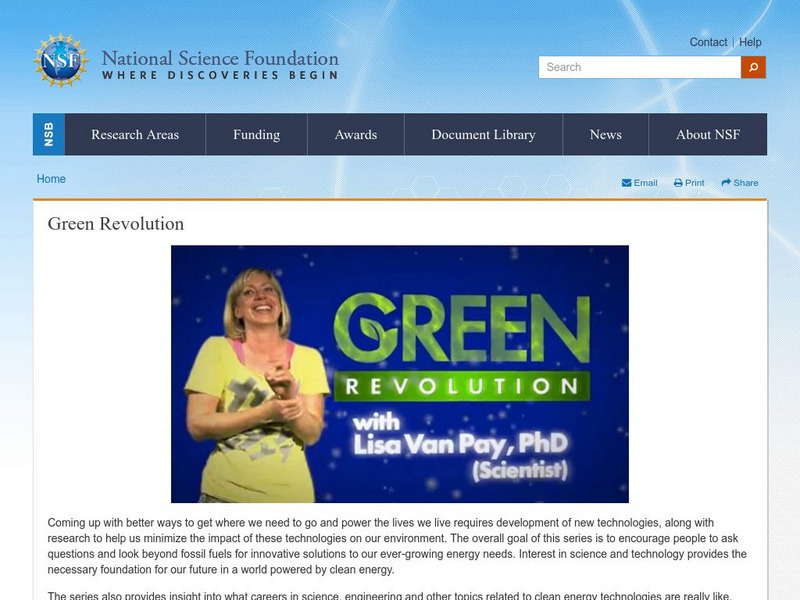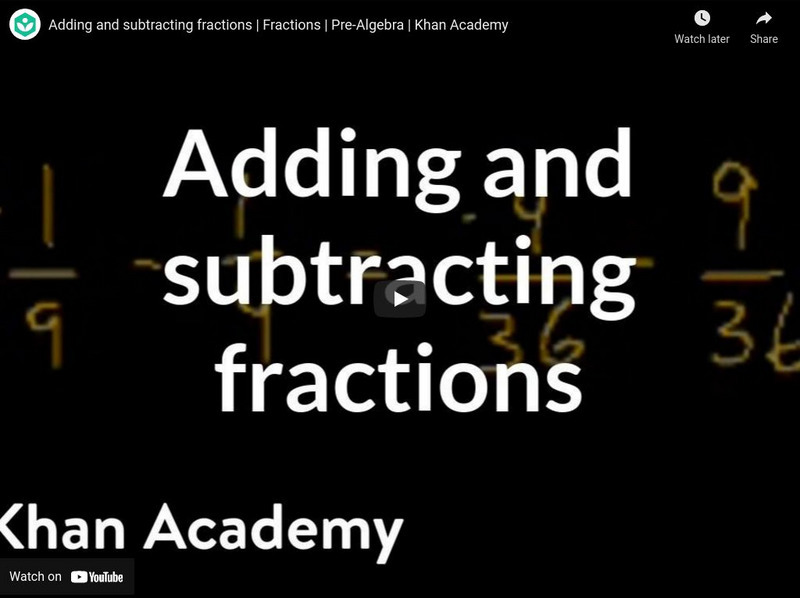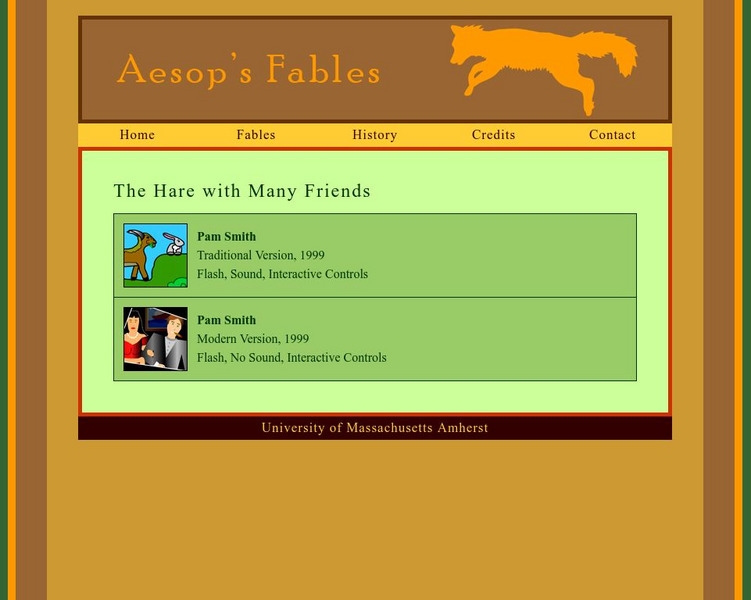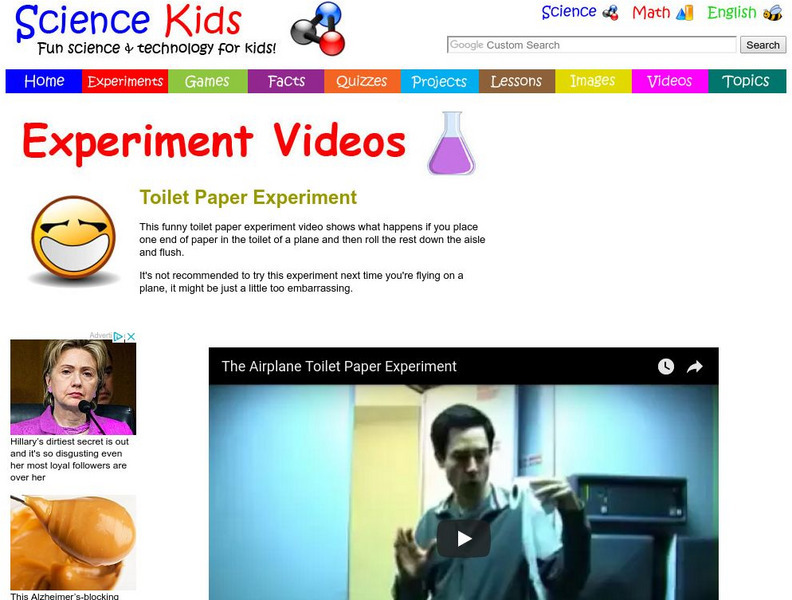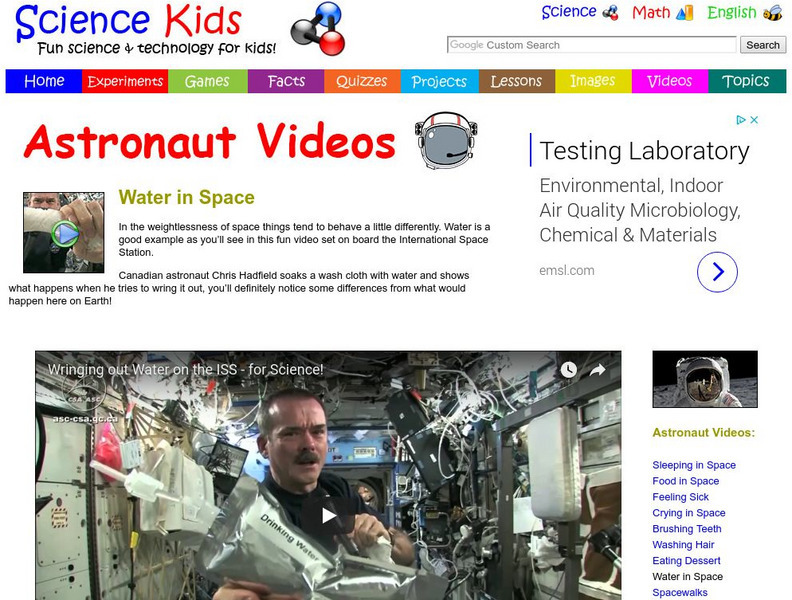National Science Foundation
National Science Foundation: Green Revolution
Videos on different forms of alternative energy and various green initiatives, e.g., green roofs.
Other
Ki Cubed: I Squared: A Different Way of Learning and Thinking
Imagine what students can accomplish in high school and beyond when they have been learning in a collaborative, real world, standards based environment throughout their elementary and middle school years! See what project-based learning...
Smithsonian Institution
Smithsonian Science Education Center: Fired Up About Energy
Did you ever want to see inside your student's minds while you are teaching a concept? Through this video, you can see the common assumptions student's hold about energy and how you can build on these ideas to explain the Law of...
CPALMS
Florida State University Cpalms: Florida Students: Magnetic Levitation
A video discussing how magnetics could be used to produce levitation. [4:53]
Khan Academy
Khan Academy: Arithmetic and Pre Algebra: Adding and Subtracting Fractions
This video shows how to add and subtract fractions with like and unlike denominators. Practice problems are available. [9:49]
PBS
Pbs Learning Media: Measuring Length Precisely
In this Cyberchase video segment, the CyberSquad must measure the length of the rope that will lower Digit from the ceiling to remove the voice box from a statue of Hacker.
PBS
Pbs Learning Media: Designing a Paper Bridge
In this video segment adapted from ZOOM, cast members make a bridge from a single piece of paper. Will it be strong enough to hold a hundred pennies? [3:41]
PBS
Pbs Learning Media: Building Simple Machines: Plant Quencher
In this video segment from ZOOM, Jillian explains how her simple machine uses marbles, levers, flowing sand, and a spinning wheel to water a plant. [1:16]
PBS
Pbs Learning Media: Designing a Roller Coaster
In this video segment adapted from ZOOM, the cast is challenged to design and test a roller coaster with loops, hills, and U-turns. [4:21]
PBS
Pbs Learning Media: The Raven Story
This video, adapted from material provided by the ECHO partners, portrays one telling of the story, "How Raven Gave Light to the World", a creation myth often told by the Tlingit.
PBS
Pbs Kids: Animations: What Is a Series Circuit?
Narrated animation that visually explains how wiring a set of batteries in series increases voltage. (30 secs) Uses Quicktime.
PBS
Pbs Kids: Animations: How Does a Blimp Float?
Narrated animation that visually explains how the air displaced by a blimp causes a buoyant force that gives the blimp lift. (30 secs)
University of Massachusetts
University of Massachusetts: Aesop's Fables: The Hare With Many Friends
Click through two traditional retellings of Aesop's fable "The Hare with Many Friends" to learn the difference between having a lot of friends and having good friends. The first story has literal illustrations, while the second has...
Science for Kids
Science Kids: Earth Videos: Fun Volcano Song
Sing along to this music video to help learn vocabulary for the study of volcanoes, while watching volcanic eruptions at the same time. (Length: 1 min. 57 sec.)
Science for Kids
Science Kids: Experiment Videos: When a Balloon Won't Pop
Watch this video and see the difference water can make as it absorbs the heat from the flame before the balloon can pop. [3:48]
Science for Kids
Science Kids: Experiment Videos: Toilet Paper Experiment
This funny toilet paper experiment shows what happens if you place one end of the toilet paper roll in the toilet of a plane and then roll the rest down the aisle, and then flush. [1:11]
Science for Kids
Science Kids: Astronaut Videos: Water in Space
Watch Canadian astronaut Chris Hadfield soak a wash cloth with water, and then wring it out in space. [3:18]
Museum of Science
Ei E: Lighten Up: Designing Lighting Systems Lesson 1
A storybook introduces the engineering challenge and context. In this story, Omar, a boy from Egypt, learns about optical engineering as he helps design his own lighting system. [14:51]
Museum of Science
Ei E: A Stick in the Mud: Evaluating a Landscape Lesson 3 Part 2
Students use maps to study the erosion along a riverbank over time and conduct controlled experiments to determine how soil compaction around a foundation affects the foundation's strength. [8:55]
Museum of Science
Ei E: A Stick in the Mud: Evaluating a Landscape Lesson 3 Part 1
Students use maps to study the erosion along a riverbank over time and conduct controlled experiments to determine how soil compaction around a foundation affects the foundation's strength. [7:20]
Museum of Science
Ei E: A Stick in the Mud: Evaluating a Landscape Lesson 2
Students think like geotechnical engineers as they take core samples of a model building site and decide how deeply the pier foundations for a model skyscraper should be anchored into the soil. [11:40]
Museum of Science
Ei E: A Stick in the Mud: Evaluating a Landscape Lesson 1
A storybook introduces the engineering challenge and context. In this story, Suman, a boy from Nepal, learns about geotechnical engineering as he helps evaluate a site for a TarPul. [13:09]
Museum of Science
Ei E: The Best of Bugs: Designing Hand Pollinators Lesson 2
Students think like agricultural engineers as they perform a play about Integrated Pest Management at an apple orchard. [12:15]


